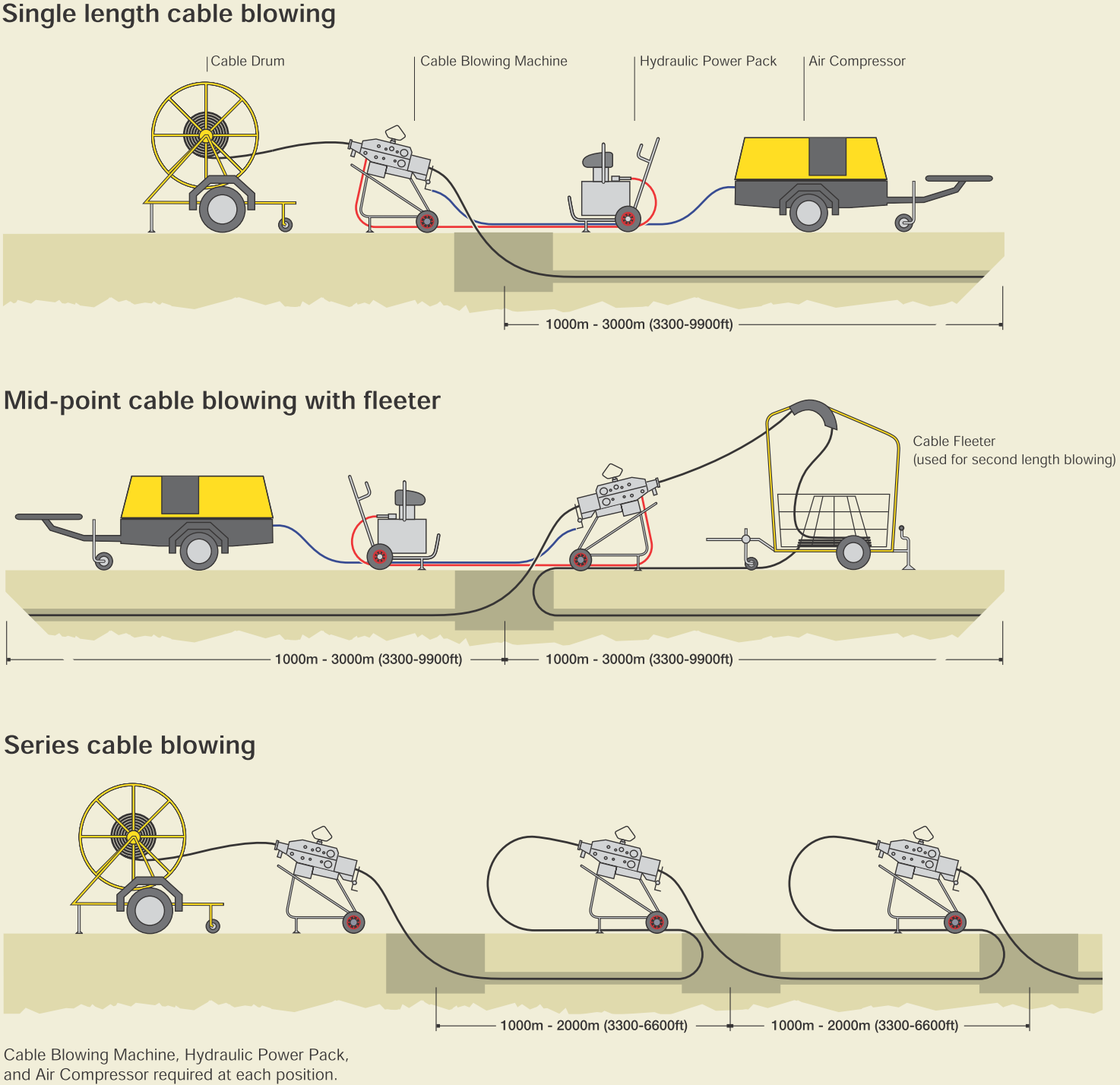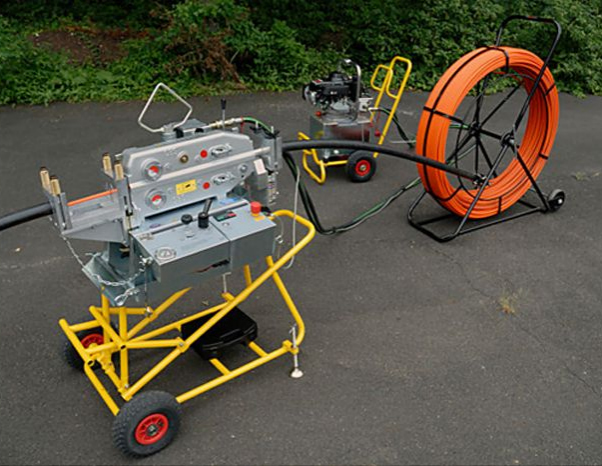The technique of installing flexible and lightweight fibre optic units using compressed air was developed during the 1980s by British Telecom. This early version of jetting did not use additional pushing. True cable jetting was invented by Willem Griffioen of KPN Research in the late 1980s. After decades of development, this technology has been successfully applied to long-haul trunk network, metropolitan area networks and optical access networks in Europe and America.

Have you ever seen a maglev train? It glides across the top of the track, never really touching it and thereby minimizing the friction. This scenario is similar to air blown fiber. Air blown fiber systems use air to blow micro optical fiber cables through pre-installed microducts. Air is blown into micro ducts to create a nearly frictionless surface. This air reduces the friction between the fiber cable jacket and the inside wall of the duct. In other words, the cable touches air instead of the duct, making it much easier and faster to install.Microducts can be easily disassembled and each can be driven to a different route. Fiber can be blown using these tubes for easy distribution without the need for splicing and creating point-to-point installations.

Where to Use Blow Fiber
FTTH – Blown micro fiber cable systems are fast becoming the preferred system of choice in access networks, where cost of homes passed, speed of deployment, flexibility, and future scalability is of utmost importance. Today, blown fiber to the home is being adopted as the preferred architecture for access networks — AKA the “last mile” – delivering telecommunications service to end-user’s premises.
Data centers and 5G – Another not so obvious application of air blown technologies is for data center, 5G or other networks requiring high fiber count connections between two points. Sometimes several 1000-s of fibers are required and by using multiple cables blown into micro tubes, the installation will be faster and safer. It is also easier to build a redundant network.
Note that blown fiber and micro tubes are equally suitable for outdoor use as well as indoor use. For indoor applications, flame retardant micro tubes are used.
Comparison of air blown cable and traditional optical cable
Structured cabling systems with traditional fiber-optic cable have proven to be an efficient, cost-effective solution for private networks. While air blown cable has a list of substantial benefits, there are, however, projects where air blown cable might not provide the right balance of costs versus benefits.
One example is the approach to growth. Most air blown cable installations would include room for network growth. However, if most of the connections are spoken for, air blown cable could be a more problematic justification. This is because much of the value is in its lower costs over time. Saving money by installing only what you need today might save money today but not planning for future growth can remove this future benefit. If your needs are so large where they won’t be leaving large amounts of unused dark fiber, ABF may not be the right solution.
We recommend air blown cable generally for environments where lots of moves, adds, and changes are expected. That is where you save money over traditional cabling installs. However, you will never get away from traditional fiber completely. For example, in environments where the network requires an extensive strand count backbone (i.e., 144, 288, etc.).

What are the advantages of air-blown optical cable
Air blown fibers being blown into place, rather than pulled, puts no zero tensile stress on the fiber during installation and fiber splice points can be eliminated, lowering attenuation and increasing system performance and integrity.
Installing blown fibers ensures that the microduct can be reused for fiber expansion or replacement in the future by blowing out the existing microcables and blowing in new ones.
Air blown fiber systems offer cost savings and other benefits compared to traditional fiber systems. These benefits include reduced outside plant material, faster installation times, fewer fiber connection points (which reduces the number of splices), simplified repairs and maintenance, and a path for future evolving applications (such as adding new fibers).


 Scan and add WeChat
Scan and add WeChat